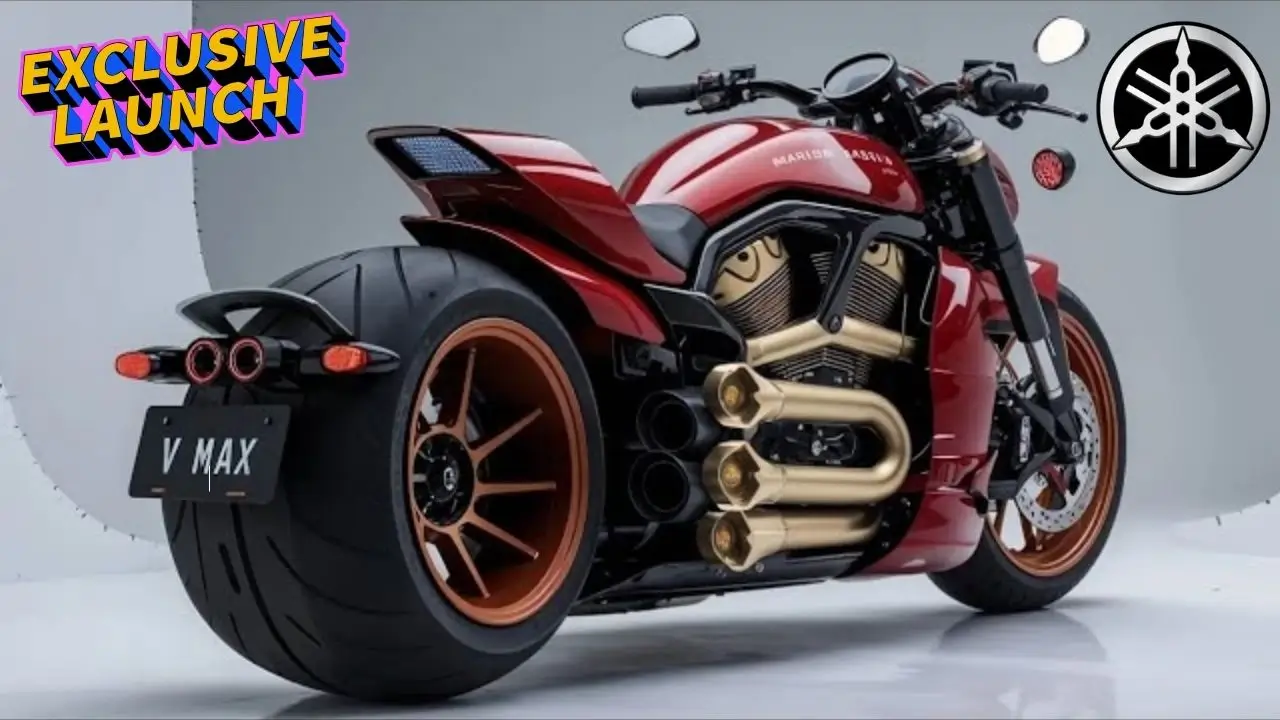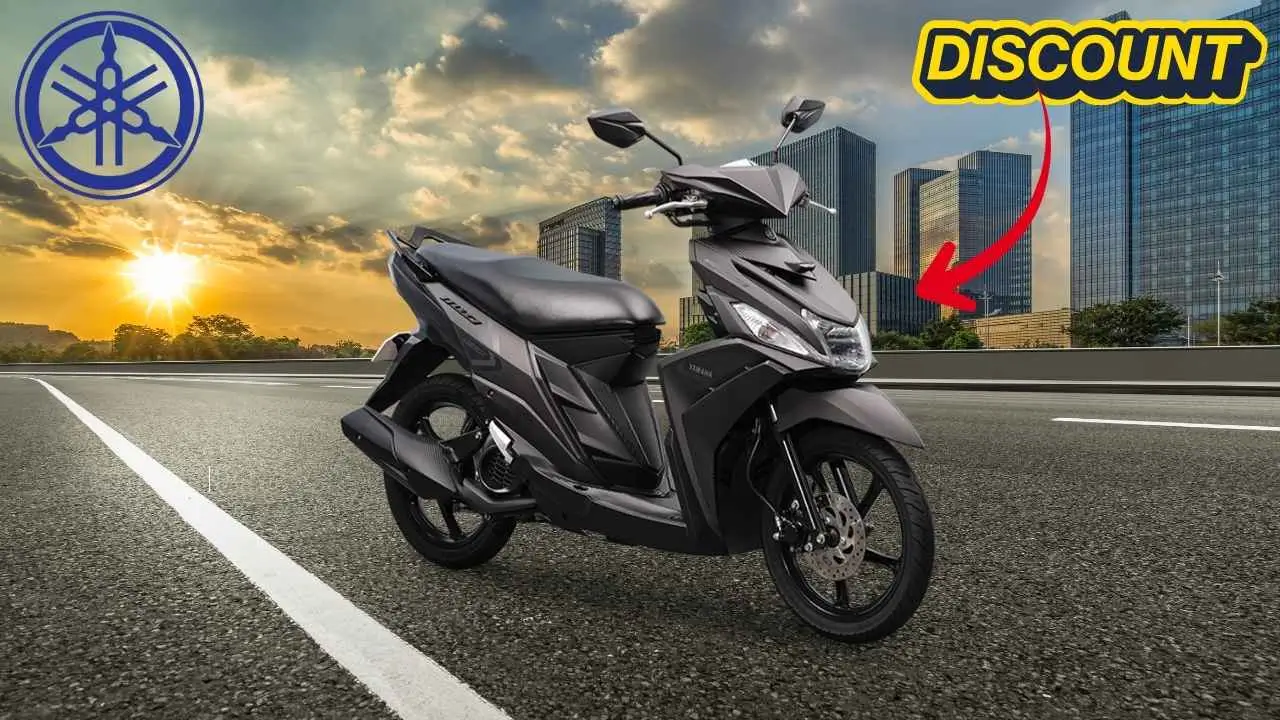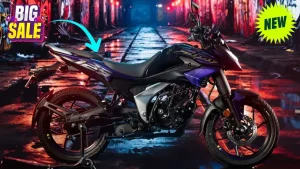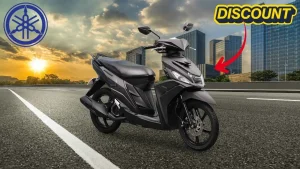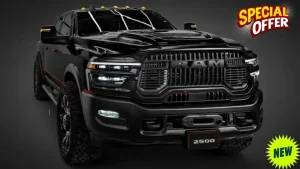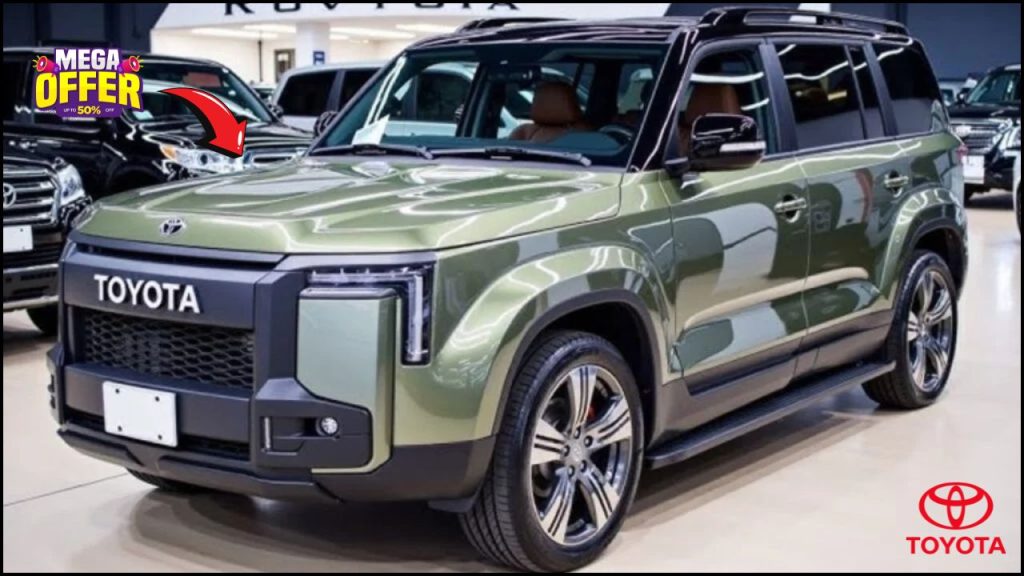
In the ever-growing SUV segment, buyers often face the dilemma of choosing between robust off-road capability and urban-friendly usability. The arrival of the Toyota Mini Land Cruiser aims to bridge that divide. With its rugged, SUV-inspired design, five-seater practicality and a claimed mileage of around 16 km/l, it brings the DNA of the legendary Land Cruiser into a more accessible and versatile package. The introductory offer for early buyers adds an extra layer of appeal, prompting those seeking style, durability and practicality to take notice.
Table of Contents
Toyota Mini Land Cruiser
The Toyota Mini Land Cruiser is crafted to deliver the appeal of the Land Cruiser family in a compact SUV format. It retains the bold stance, squared-off edges and off-road inspiration that the Land Cruiser name evokes — yet it is tailored for everyday use, accommodating five occupants and targeting a fuel economy around 16 km/l. Positioned as a limited-time introductory-offer model, it signals Toyota’s intention to generate strong early demand. According to available information, the model measures around 4.3–4.4 metres in length and features high ground clearance, a rugged ladder-frame chassis and purposeful styling.
Overview Table of Toyota Mini Land Cruiser
| Feature | Details |
|---|---|
| Seating capacity | 5 seats |
| Claimed mileage | Around ~ 16 km/l (14-16 km/l expected) |
| Design style | Rugged 5-seater SUV with compact footprint |
| Length | Approx. 4.3–4.4 m |
| Platform / build | Ladder-frame chassis (IMV-type) expected |
| Target segment | Early buyers, compact off-road capable SUV |
Design & Build Quality of Toyota Mini Land Cruiser
The design of the Mini Land Cruiser stands out for its throw-back aesthetic. Inspired by earlier Land Cruiser generations, it features a boxy, upright silhouette, large wheel arches, bold front grille and muscular presence — all cues that emphasise its rugged character. According to the available information, the SUV is expected to sit on a ladder-frame chassis, which is more robust and suited for rough terrain than many conventional crossover unibody designs.
The materials and finish also appear geared for durability: tough body cladding, prominent ground clearance, and an architecture that suggests this vehicle is ready for adventures beyond just smooth city streets.
For a buyer, this means the vehicle visually signals capability — and likely offers stronger mechanical backbone than many compact SUVs purely designed for urban commuting.
Toyota Mini Land Cruiser’s Engine, Performance & Mileage
Although full official specifications remain unconfirmed, available reports suggest the Mini Land Cruiser will deliver a performance-to-efficiency balance. It is expected to deliver mileage in the ballpark of 14 to 16 km/l under mixed driving conditions.
In terms of engine options, various speculative sources hint at a range of possibilities: a 2.0-litre petrol, possibly a 2.7-litre petrol, or mild-hybrid variants in certain markets. This flexibility implies that Toyota may choose different powertrains depending on region and emissions requirements.
Further, the potential for a 4×4 drivetrain and low-range gearing is mentioned in some reports. These features would enhance off-road readiness substantially — an uncommon trait in compact SUVs.
For the buyer, the key takeaway is this: you may pay a premium over simpler crossovers, but you get SUV-style ruggedness without the size and running-cost penalties of a full-sized 4×4. The mileage figure, around 16 km/l, helps keep running costs manageable.
Interior & Features
Inside, the Mini Land Cruiser is expected to deliver a cabin that blends practicality with comfort. As a five-seater, it targets families or groups who need real rear-seat accommodation, without moving into the seven- or eight-seater territory that drives up size, weight and cost. The interior also emphasises sensible, adventure-friendly attributes: high seating position for good visibility, durable materials for tougher usage, and modern features such as touchscreen infotainment, Android Auto/Apple CarPlay, and possibly wireless charging.
On the safety front, reports anticipate standard features like ABS, EBD, multiple airbags, traction control, hill assist and a rear camera. Some variants may even carry more advanced driver-assistance features.
Together, this means Toyota appears positioning the model as practical enough for daily urban use, yet capable enough for weekend road trips and light off-road adventures.

Market Offering & Pricing Strategy
A standout aspect of this model is the introductory offer tailored to early buyers. While Toyota has not published final pricing for all markets, indications suggest this model may be priced competitively given its SUV credentials. For instance, one report that loosely discusses the model suggests expectations of around ₹ 25 lakh to ₹ 35 lakh (ex-showroom) in India, though Toyota has not confirmed this.
By using a limited-time introductory scheme, Toyota aims to generate excitement and early uptake which can help the model establish a presence in a crowded market. For prospective buyers, moving sooner rather than later could offer better pricing, better feature availability or preferred delivery slots.
Competition & Positioning
In its segment, the Mini Land Cruiser faces competition from compact or mid-sized SUVs that promise rugged styling and capability — vehicles such as the Mahindra Thar, Maruti Jimny (where available), and Force Gurkha in India. What gives the Toyota model an edge is the brand heritage of the Land Cruiser name and the suggestion of genuine off-road capability (ladder-frame, high ground clearance, etc) while still being five-seater and reasonably efficient.
In more urban-centric roles, it may also compete with premium compact SUVs that emphasise style over ruggedness. But importantly, its differentiator is the “go-anywhere” visual and mechanics without stepping into full-sized SUV territory. For buyers who want SUV credentials with manageable size and running cost, this positioning may prove compelling.
Buyer Profile & Use-Cases
This model is likely to appeal to a few distinct buyer profiles:
- Adventure-seekers with daily-driver needs: People who commute daily but also enjoy weekend getaways, off-road trails or camping trips and want a real SUV feel.
- Families wanting SUV presence without bulk: Five seats suffice for most families; avoiding seven-seaters means less weight, better efficiency and easier manoeuvring.
- Early adopters attracted by exclusivity: The introductory-offer model will appeal to those who want something new and distinct, rather than mainstream crossovers.
- Buyers valuing brand reliability and resale: With Toyota’s pedigree, durability and resale value are likely strong factors. Over rough roads, bad weather and long usage, Toyota builds tend to fare well.
In practical terms, this SUV would handle both city traffic and tougher terrains. High ground clearance, strong chassis and SUV presence mean it can take on poor roads, hills and uneven surfaces with more confidence than many crossover alternatives.
Ownership Considerations & Tips
To make the most of this model, here are a few practical tips for prospective buyers:
- Confirm exact variant and drivetrain: Since some reports are speculative, check whether your market receives 4×4, low-range gearing, or only 4×2,— and which engine options apply.
- Check real-world fuel economy: While 16 km/l is a headline figure, actual mileage will depend on load, driving style, terrain and 4×4 usage. Urban stop-go, heavy usage or towing will reduce it.
- Service network & parts availability: Since the model brings off-road capability, ensure that local dealerships can service off-road components (4×4, differential locks) and that parts are available.
- Resale and insurance premium: SUV status often attracts higher insurance and potential higher resale value; factor in both when doing cost comparisons.
- Fit for your terrain and usage: If you frequently travel on very rough terrain or off-road, the ladder-frame build will serve well. If you are purely urban, consider whether you need full SUV mechanics or if a simpler crossover suffices— but the Mini Land Cruiser gives you option and flexibility.
- Look at optional accessories: Since this model emphasises ruggedness, Toyota may offer special accessories (roof racks, snorkels, off-road tyres) — assess the cost vs benefit.
Why It Matters in India & Emerging Markets
In markets like India, where mixed-road conditions, variable terrain and urban congestion are all present, a vehicle that offers both robustness and manageable size is highly valued. Many buyers compromise by taking a full-sized SUV (high running cost, large size) or a small crossover (limited off-road ability). The Mini Land Cruiser promises to offer a middle ground.
In addition, brand reliability matters hugely in countries with long journey times and variable servicing infrastructure — and Toyota’s reputation adds confidence. The 5-seater design avoids the complication and extra cost of large seven-seat SUVs, while giving the SUV presence and rugged appeal many buyers want.
The mileage target (~16 km/l) is also relevant: in fuel-cost sensitive markets, better efficiency is a major plus. Combine that with SUV capability, and you get a vehicle that is potentially well-rounded for a broad spectrum of users.
Potential Weak Points & Things to Watch
No vehicle is perfect, and some trade-offs likely apply here. While rugged build is a plus, heavy components (4×4, ladder-frame chassis) may increase cost, weight and possibly running/maintenance costs compared to simpler crossovers.
If you mostly drive in the city, the full off-road capability may go under-utilised — you may pay for features you rarely use. The claim of ~16 km/l is promising, but you should expect lower via real-world usage especially under off-road load or in urban traffic.
Also, as the model is new, long-term data (resale, service cost, reliability specifics) will be less available compared to established vehicles. Early buyers may carry some of that risk — but also the advantage of exclusivity and possibly special pricing.
Conclusion
The Toyota Mini Land Cruiser is a promising addition to the SUV landscape — one that brings tough-looking design, credible off-road inspiration, five-seat practicality and a headline mileage around 16 km/l into a compact footprint. With an introductory-offer for early buyers, it presents an attractive option for those who want SUV stature without the size, cost and fuel penalty of a full-sized 4×4.
If you’re a buyer who uses the vehicle both for daily driving and occasional adventures, who values strong build and brand reliability, and who wants the SUV look and feel in a manageable size — this model merits a close look. Be sure to verify whether your market’s offering includes the features you want (engine options, 4×4 vs 4×2, accessories) and check whether your local service network is prepared to support the rugged build.
In a segment crowded with crossovers chasing the SUV look, the Mini Land Cruiser stands out by offering genuine SUV bones in a more user-friendly package. For early adopters, the introductory offer could make timing matter — so if this resonates with your needs, move swiftly and explore bookings, feature availability and delivery timelines.


